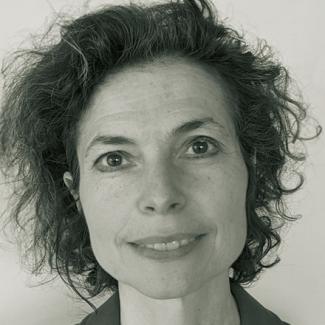United Nations
Mixed results

All 193 UN member countries have unanimously adopted the New Urban Agenda (NUA). Their delegates had agreed the final text weeks before the conference started. While many municipal leaders were among the 30,000 participants in Quito, only few national-level leaders attended the conference.
An important aspect of the NUA is that it acknowledges that all inhabitants of an agglomeration enjoy a “right to the city” in the sense of being entitled to use its infrastructure, shape its character and make themselves at home. In view of growing inequalities, this right is very important.
Urban areas are the hubs of economic growth around the world as well as key destination areas of migrants. Cities are marked by great social and economic disparities, and they are exposed to conflicts over resources, income, goods and services. The NUA explicitly spells out the rights of refugees and migrants in this context. One of its goals is to achieve synergies between international migration and development.
The NUA argues that municipal authorities’ capacity to act must be boosted at national and local levels for them to become able to rise to the challenges. Unfortunately, however, the document does not appropriately deal with the international level. It neither refers to the lack of serious roles for urban and local governments in UN policy-making, nor to the international conditionalities that often limit the scope of local policy-making. That is the case, for instance, when municipal budgets are slashed in the course of structural adjustment.
The NUA includes proposals concerning suggestions for the decentralisation of administrative bodies, jurisdictions, spatial planning and budgeting. It promotes participatory decision-making that involves the people at large. Moreover, local governments are considered to be important partners for implementing and monitoring the proposed measures. However, the agenda is not legally binding and does not include tangible indicators for assessing success. It therefore remains an open question how impact monitoring will be conducted.
The NUA is linked to the 17 Sustainable Development Goals (SDGs) that were adopted by the UN last year. SDG 11, for example, is to “make cities and human settlements inclusive, safe, resilient and sustainable”. Other SDGs have local-level implications as well.
While the NUA is thus rooted in the SDGs, it does not move this discourse forward. The NUA’s first section states that the efforts contribute to achieving the SDGs, but it does not spell out the implications. The entire document only mentions the climate agreement that was struck in Paris last year twice.
Ultimately, the NUA does not recognise in full the huge relevance that cities have for global sustainable development. This relevance has, for example, been elaborated by the WBGU, the German Federal Government’s Advisory Council on Global Change (see interview with Dirk Messner). The NUA fails to spell out the urgency of avoiding destructive lock-ins and developing alternative models for the design, planning and management of cities.
Habitat conferences are held every 20 years. The results of Habitat II in Istanbul in 1996 included the Habitat Agenda and a Global Plan of Action. Their tangible impact remained rather limited however. At best, Habitat II only had a minor impact on the dramatic urbanisation the world has been witnessing in recent years. Today, more than half of the world population lives in urban settings, and the share will rise to two thirds by 2050.
Ahead of Habitat III, debate thus revolved around implementation and procedural aspirations. Nonetheless, the Quito Implementation Plan, the only formal implementation structure of Habitat III as of today, is somewhat disappointing.
Implementation plan
In the context of this plan, governments, municipalities, civil-society organisations, private-sector companies, scientific institutes and other players were invited to submit tangible measures to implement the NUA. By the end of the conference, a mere 64 commitments were made. This number is tiny. By comparison, some 11,000 projects were announced at the climate conference in Paris in December 2015.
One of Quito’s few national-level initiatives was launched by Germany’s Federal Ministry for Economic Cooperation and Development (BMZ). It is called Transformative Urban Mobility Initiative (TUMI). The BMZ has been promoting urban infrastructure and good municipal governance as focus issues for some time. In cooperation with KfW Development Bank, it will make € 1 billion available for building and expanding sustainable transport options in developing countries and emerging markets as early as next year. One thousand experts and managers involved in urban mobility will be trained. Moreover, innovative pilot projects in small and mid-sized towns will get support.
All in all, however, national governments only announced four initiatives in Quito. Municipal authorities announced seven. The majority of proposals were small. They were made by grassroots organisations that focus on maintaining green spaces, generating employment or promoting the social inclusion of the youth.
The Quito Implementation Plan categorises all initiatives according to topics such as housing and infrastructure, social cohesion and justice et cetera. It does not state, however, how the various commitments are supposed to add up to a holistic urban development strategy at a global level.
Success will thus depend on the action of national and municipal governments. The strong interest that municipal leaders have showed in Habitat III inspires some optimism. They matter very much, and their relevance will keep growing. When Habitat II took place in Istanbul 20 years ago, urban development was something of a niche topic in global development debate, but cities are increasingly understood to be the focal centres where sustainable development must happen.
Eva Dick is a senior researcher at the German Development Institute (DIE-GDI). Ahead of Habitat III, she provided advice to Germany’s Federal Ministry for Economic Cooperation and Development (BMZ). This essay spells out her personal views.
eva.dick@die-gdi.de
Link
The New Urban Agenda:
https://habitat3.org/the-new-urban-agenda/













